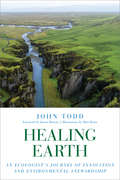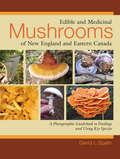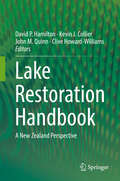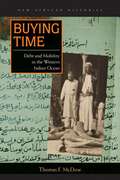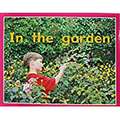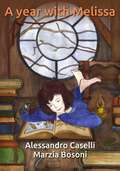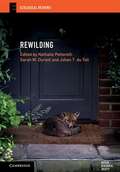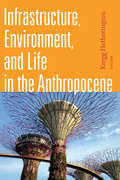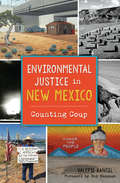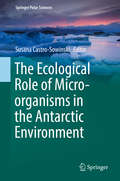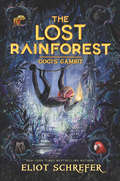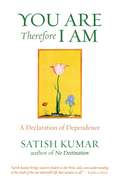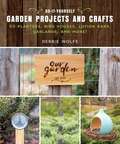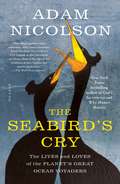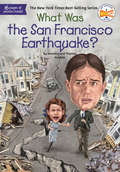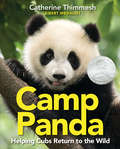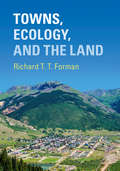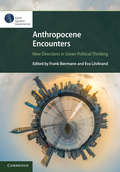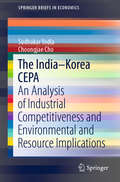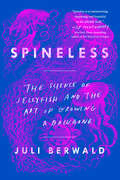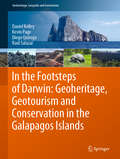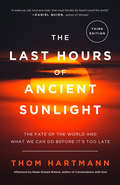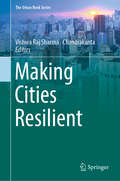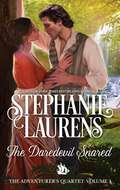- Table View
- List View
Healing Earth: An Ecologist's Journey of Innovation and Environmental Stewardship
by John Todd Janine Benyus Matt BeamA true pioneer and respected elder in ecological recovery and sustainability shares effective solutions he has designed and implemented.A stand-out from the sea of despairing messages about climate change, well-known sustainability elder John Todd, who has taught, mentored, and inspired such well-known names in the field as Janine Benyus, Bill McKibben, and Paul Hawken, chronicles the different ecological interventions he has created over the course of his career. Each chapter offers a workable engineering solution to an existing environmental problem: healing the aftermath of mountain-top removal and valley-fill coal mining in Appalachia, using windmills and injections of bacteria to restore the health of a polluted New England pond, working with community members in a South African village to protect an important river. A mix of both success stories and concrete suggestions for solutions to tackle as yet unresolved issues, Todd's narrative provides an important addition to the conversation about specific ways we can address the planetary crisis. Eighty-five color photos and images illustrate Todd's concepts. This is a refreshingly hopeful, proactive book and also a personal story that covers a known practitioner's groundbreaking career.
Edible and Medicinal Mushrooms of New England and Eastern Canada: A Photographic Guidebook to Finding and Using Key Species
by David L. SpahrThis beautifully illustrated guidebook provides specific, easy-to-understand information on finding, collecting, identifying, and preparing the safer and more common edible and medicinal mushroom species of New England and Eastern Canada. Author David Spahr, a trained commercial photographer, here combines his mycological expertise and photographic skill to produce an attractive and detailed overview of his subject. Based on decades of practical experience and research, the book is written in a clear and forthright style that avoids the dry, generic descriptions of most field guides. Edible and Medicinal Mushrooms of New England and Eastern Canada also provides useful ideas for cooking mushrooms. Rather than simply providing recipes, the book discusses the cooking characteristics of each variety, with advice about matching species with appropriate foods. Many mushrooms contain unique medicinal components for boosting the immune system to fight cancer, HIV, and other diseases, and Spahr offers practical and prudent guidelines for exploration of this rapidly emerging area of alternative therapeutic practice.
Lake Restoration Handbook: A New Zealand Perspective
by David P. Hamilton Kevin J. Collier John M. Quinn Clive Howard-WilliamsLakes across the globe require help. The Lake Restoration Handbook: A New Zealand Perspective addresses this need through a series of chapters that draw on recent advances in modelling and monitoring tools, citizen science and First Peoples’ roles, catchment and lake-focused restoration techniques, and policy implementation. New Zealand lakes, like lakes across the globe, are subject to multiple pressures that have increased in severity and scale as land use has intensified, invasive species have spread and global climate change becomes manifest. This books builds on the popular Lake Managers Handbook (1987), which provided guidance on undertaking investigations into, and understanding lake ecosystems in New Zealand. The Lake Restoration Handbook: A New Zealand Perspective synthesises contemporary issues related to lake restoration and rehabilitation, integrated with social science and cultural viewpoints, and complemented by authoritative topic-area summaries by renowned scientists and practitioners from across the globe. The book examines the progress of lake restoration and the new and emerging tools available to managers for predicting and effecting change. The book will be a valuable resource for natural and social scientists, policy writers, lake managers, and anyone interested in the health of lake ecosystems.
Buying Time: Debt And Mobility In The Western Indian Ocean (New African Histories)
by Thomas F. McDowIn Buying Time, Thomas F. McDow synthesizes Indian Ocean, Middle Eastern, and East African studies as well as economic and social history to explain how, in the nineteenth century, credit, mobility, and kinship knit together a vast interconnected Indian Ocean region. That vibrant and enormously influential swath extended from the desert fringes of Arabia to Zanzibar and the Swahili coast and on to the Congo River watershed. <p><p> In the half century before European colonization, Africans and Arabs from coasts and hinterlands used newfound sources of credit to seek out opportunities, establish new outposts in distant places, and maintain families in a rapidly changing economy. They used temporizing strategies to escape drought in Oman, join ivory caravans in the African interior, and build new settlements. <p> The key to McDow's analysis is a previously unstudied trove of Arabic business deeds that show complex variations on the financial transactions that underwrote the trade economy across the region. The documents list names, genealogies, statuses, and clan names of a wide variety of people--Africans, Indians, and Arabs; men and women; free and slave--who bought, sold, and mortgaged property. Through unprecedented use of these sources, McDow moves the historical analysis of the Indian Ocean beyond connected port cities to reveal the roles of previously invisible people.
In The Garden (Rigby PM Plus Starters #Magenta (Level 1))
by RigbyA learn-to-read story about insects, spiders and other garden creatures.
A Year with Melissa
by Alessandro Caselli Marzia BosoniRespect for the environment, animals and ourselves - this is what the inquisitive Melissa, a 6-year-old girl discusses with Mr Cat, a wise stray cat. Six stories told over the course of one year in the life of the little girl to share a little of the wisdom accumulated by the cat over years travelling the world. Through these stories, the cat asks adults to stop and reflect for a moment on the important subjects such as ecology, pollution, pain and friendship. A children's book that appeals to adults who still know how to find the time to talk with their little ones. And Cats!
Rewilding (Ecological Reviews)
by Nathalie Pettorelli Sarah M. Durant Johan T. du ToitThrough a global and interdisciplinary lens, this book discusses, analyzes and summarizes the novel conservation approach of rewilding. The volume introduces key rewilding definitions and initiatives, highlighting their similarities and differences. It reviews matches and mismatches between the current state of ecological knowledge and the stated aims of rewilding projects, and discusses the role of human action in rewilding initiatives. Collating current scholarship, the book also considers the merits and dangers of rewilding approaches, as well as the economic and socio-political realities of using rewilding as a conservation tool. Its interdisciplinary nature will appeal to a broad range of readers, from primary ecologists and conservation biologists to land managers, policy makers and conservation practitioners in NGOs and government departments. Written for a scientifically literate readership of academics, researchers, students, and managers, the book also acts as a key resource for advanced undergraduate and graduate courses.
Infrastructure, Environment, and Life in the Anthropocene (Experimental Futures)
by Kregg HetheringtonInfrastructure, Environment, and Life in the Anthropocene explores life in the age of climate change through a series of infrastructural puzzles—sites at which it has become impossible to disentangle the natural from the built environment. With topics ranging from breakwaters built of oysters, underground rivers made by leaky pipes, and architecture gone weedy to neighborhoods partially submerged by rising tides, the contributors explore situations that destabilize the concepts we once relied on to address environmental challenges. They take up the challenge that the Anthropocene poses both to life on the planet and to our social-scientific understanding of it by showing how past conceptions of environment and progress have become unmoored and what this means for how we imagine the future. Contributors. Nikhil Anand, Andrea Ballestero, Bruce Braun, Ashley Carse, Gastón R. Gordillo, Kregg Hetherington, Casper Bruun Jensen, Joseph Masco, Shaylih Muehlmann, Natasha Myers, Stephanie Wakefield, Austin Zeiderman
Environmental Justice in New Mexico: Counting Coup (Natural History)
by Valerie Rangel Bob HaozousIn New Mexico and across America, communities of color bear the brunt of contamination from generations of expansion, mining, nuclear testing and illegal dumping. The nation's largest uranium waste spill occurred in 1979 at Church Rock, and radioactivity in the Rio Puerco remains at dangerous levels. The National Trust for Historic Preservation listed Mount Taylor as one of the ten most endangered historic sites in America. After decades of sickness from Rio Grande river water, the first female governor of a Pueblo Nation, Verna Olgin Teller, led tribal members to a Supreme Court victory over Albuquerque. Valerie Rangel presents stories of strife and struggle in the war to protect the integrity of natural systems, rights to religious freedom and the continuation of traditional customs.
The Ecological Role of Micro-organisms in the Antarctic Environment (Springer Polar Sciences)
by Susana Castro-SowinskiThis book provides up-to-date multidisciplinary information regarding microbial physiological groups in terms of their role in the Antarctic ecology. How do microorganisms shape the Antarctic environment? The book presents a thorough overview of the most important physiological microbial groups or microbial systems that shape the Antarctic environment. Each microbial model is described in terms of their physiology and metabolism, and their role in the Antarctic environmental sustainability. The individual chapters prepare readers for understanding the relevance of the microbial models from both an historical perspective, and considering the latest developments. This book will appeal to researchers and teachers interested in the Antarctic science, but also to students who want to understand the role of microbes in the ecology of extreme environments.
Plantology: 30 Activities and Observations for Exploring the World of Plants (Young Naturalists)
by Michael Elsohn RossDID YOU KNOW...Scientists believe that mosses, the first plants, may have changed the Earth's climate from hot to cold by removing carbon dioxide from the atmosphere?Many members of the cabbage family release a poison "mustard" gas to fend off grazers?Plants are used in thousands of industries, from low-cost sewage treatment to new medical cures?Young nature enthusiasts will learn these and other fascinating facts about plants in this colorful, interactive resource. Plantology contains fun, kid-friendly discussions and activities to explore many topics—from seeds, roots, and sprouts to plant skeletons, leaves, petals, and fruits. It then goes beyond the basics to delve into the unknown world of common weeds, fascinating plant defense systems, and the countless roles plants play in our lives. With encouragement to "Try This," "Smell It," and "Look For," kids participate in 30 hands-on activities that promote observation and analysis, writing and drawing, math and science, and nature literacy skills. Children will keep a journal, examine and sketch plant structures, start a seed collection, make tasty vegetarian dishes, and more. Readers from any environment will start to notice the plants around them—not just in parks, gardens, and woods but also surrounding the schools, buildings, and sidewalks of their town, and in their own backyards. Useful resources include a glossary of scientific terms, a list of nature organizations and groups, and a teacher's guide to initiate classroom discussion and investigation.
The Lost Rainforest #2: Gogi's Gambit
by Eliot Schrefer Emilia DziubakThe second book in New York Times bestselling author and National Book Award finalist Eliot Schrefer’s Lost Rainforest series will thrill fans of Warriors and Spirit Animals with action and humor as the shadowwalkers battle to save their magical rainforest home.Caldera always existed in harmony between the creatures who walk by day and those who walk by night—until an ancient evil awakened. In the year since the shadowwalkers’ narrow escape from the Ant Queen, the ants’ destruction has only spread.Gogi, a shadowwalker monkey still learning to wield his fire powers, embarks on a quest with his friends—including a healing bat, an invisible panther, and a tree frog who controls the winds—for a powerful object that can harness the magic of the eclipse to defeat the Ant Queen.But with just weeks before the next eclipse, Gogi must race to prove that he can control the mighty depths of his talent if he is to protect his friends, save the rainforest, and return home unsinged.
You Are Therefore I Am: A Declaration of Dependence
by Satish KumarYou Are, Therefore I Am is divided into parts. <P><P>The first describes his memories of conversations with his mother, his teacher, and his Guru, all of whom were deeply religious. <P><P>The second part recounts his discussions with the Indian sage Vinoba Bhave, J. Krishnamurti, Bertrand Russell, Martin Luther King, and E. F. Schumacher. <P><P>These five great activists and thinkers inspired him to engage with social, ecological, and political issues. <P><P>In the third part, Satish narrates his travels in India, which have continued to nourish his mind and reconnect him with his roots.
Do-It-Yourself Garden Projects and Crafts: 60 Planters, Bird Houses, Lotion Bars, Garlands, and More
by Debbie WolfeImprove Your Garden and Home with Easy DIY Projects and Beautiful Botanical Crafts Create your dream garden with simple bird baths, herb drying racks, and unique planters. And bring the outdoors indoors with natural fabric dyes, pressed flower paper, and herbal bouquets. <P><P>DIY Garden Projects and Crafts book relies on home grown and foraged materials that will inspire creativity and capture the bounty of the seasons. The sixty practical and decorative projects for use in the garden and home include: <br>Gardener's Tool Apron <br>Metal garden charms <br>Veggie Market Tote <br>Macrame produce bag <br>Gourd bird feeder <br>Kirigami leather hanging planter <br>Tomato cage plant stand <br>Shibori Dyed Fabric <br>Herbal lotion bars <br>Gardener hand scrub <br>All-purpose thyme cleaner <br>And more! <P><P>Do-It-Yourself Garden Projects and Crafts features detailed, step-by-step instructions as well as simple crafting and gardening tips that will make your projects successful.
The Seabird's Cry: The Lives and Loves of the Planet's Great Ocean Voyagers
by Adam NicolsonLife itself could never have been sustainable without seabirds. As Adam Nicolson writes: "They are bringers of fertility, the deliverers of life from ocean to land."A global tragedy is unfolding. Even as we are coming to understand them, the number of seabirds on our planet is in freefall, dropping by nearly 70% in the last sixty years, a billion fewer now than there were in 1950. Of the ten birds in this book, seven are in decline, at least in part of their range. Extinction stalks the ocean and there is a danger that the grand cry of the seabird colony, rolling around the bays and headlands of high latitudes, will this century become little but a memory.Seabirds have always entranced the human imagination and NYT best-selling author Adam Nicolson has been in love with them all his life: for their mastery of wind and ocean, their aerial beauty and the unmatched wildness of the coasts and islands where every summer they return to breed. The seabird’s cry comes from an elemental layer in the story of the world.Over the last couple of decades, modern science has begun to understand their epic voyages, their astonishing abilities to navigate for tens of thousands of miles on featureless seas, their ability to smell their way towards fish and home. Only the poets in the past would have thought of seabirds as creatures riding the ripples and currents of the entire planet, but that is what the scientists are seeing now today.
What Was the San Francisco Earthquake? (What Was?)
by Dorothy Hoobler Ted Hammond Thomas HooblerIn this addition to the What Was? series, kids will experience what it was like to be in San Francisco in 1906 when the ground buckled in a major, catastrophic earthquake.One early April morning in 1906, the people of San Francisco were jolted awake by a mammoth earthquake--one that registered 7.8 on the Richter Scale. Not only was there major damage from the quake itself but broken gas lines sparked a fire that ravaged the city for days. More than 500 city blocks were destroyed and over 200,000 people were left homeless. But the city quickly managed to rebuild, rising from the ashes to become the major tourist destination it is today. Here's an exciting recount of an incredible disaster.From the Trade Paperback edition.
Camp Panda: Helping Cubs Return to the Wild
by Catherine ThimmeshFrom the Sibert medal winning author of TEAM MOON and the bestselling GIRLS THINK OF EVERYTHING comes a riveting, timely account of panda conservation efforts in China, perfect for budding environmentalists and activists. <P><P>Roughly a thousand years ago, an estimated 23,000 pandas roamed wild and free through their native China. But within the past forty years, more than fifty percent of the panda’s already shrinking habitat has been destroyed by humans, leaving the beautiful and beloved giant panda vulnerable to extinction. <P><P>Despite the seemingly insurmountable odds—poaching, habitat destruction, pollution, human overpopulation, and global climate change—the panda is making a comeback. How? By humans teaching baby pandas how to be wild and stay wild.
Towns, Ecology, and the Land
by Richard T. FormanTowns and villages are sometimes viewed as minor, even quaint, spots, whereas this book boldly reconceptualizes these places as important dynamic environmental 'hotspots'. Multitudes of towns and villages with nearly half the world's population characterize perhaps half the global land surface. The book's pages feature ecological patterns, processes, and change, as well as human dimensions, both within towns and in strong connections and effects on surrounding agricultural land, forest land, and arid land. Towns, small to large, and villages are examined with spatial and cultural lenses. Ecological dimensions - water, soil and air systems, together with habitats, plants, wildlife and biodiversity - are highlighted. A concluding section presents concepts for making better towns and better land. From a pioneer in both landscape ecology and urban ecology, this highly international town ecology book opens an important frontier for researchers, students, professors, and professionals including environmental, town, and conservation planners.
Anthropocene Encounters: New Directions in Green Political Thinking
by Frank Biermann Eva LövbrandCoined barely two decades ago, the Anthropocene has become one of the most influential and controversial terms in environmental policy. Yet it remains an ambivalent and contested formulation, giving rise to a multitude of unexpected, and often uncomfortable, conversations. This book traces in detail a broad variety of such 'Anthropocene encounters': in science, philosophy and literary fiction. It asks what it means to 'think green' in a time when nature no longer offers a stable backdrop to political analysis. Do familiar political categories and concepts, such as democracy, justice, power and time, hold when confronted with a world radically transformed by humans? The book responds by inviting more radical political thought, plural forms of engagement, and extended ethical commitments, making it a fascinating and timely volume for graduate students and researchers working in earth system governance, environmental politics and studies of the Anthropocene.
The India–Korea CEPA: An Analysis of Industrial Competitiveness and Environmental and Resource Implications (SpringerBriefs in Economics)
by Sudhakar Yedla Choongjae ChoThis book assesses the changes that the Comprehensive Economic Partnership Agreement (CEPA) could produce by boosting the competitiveness of firms in India and Korea. It evaluates the CEPA in terms of its effects on the environment and natural resources of the importing and exporting countries alike. Further, it employs the revealed comparative advantage (RCA) and relative trade advantage (RTA) methods of analysis to gauge the influence of the CEPA on industrial competitiveness in both host and receiving countries. While the CEPA would increase trade between India and Korea in their respective strong domains, the book argues that, given the nature of the exported and imported goods and products, India would be more susceptible to serious environmental impacts than would Korea. The book subsequently presents these impacts in a qualitative framework and stresses the need for a comprehensive valuation of not only environmental impacts, but also the losses due to tariff cuts and the gains due to increased trade between the two countries.
Spineless: The Science of Jellyfish and the Art of Growing a Backbone
by Juli BerwaldA former ocean scientist goes in pursuit of the slippery story of jellyfish, rediscovering her passion for marine science and the sea's imperiled ecosystems.Jellyfish are an enigma. They have no centralized brain, but they see and feel and react to their environment in complex ways. They look simple, yet their propulsion systems are so advanced engineers are just learning how to mimic them. They produce some of the deadliest toxins on the planet and yet are undeniably alluring. Long ignored by science, they may be a key to ecosystem stability.Juli Berwald's journey into the world of jellyfish is a personal one. Over a decade ago she left the sea and her scientific career behind to raise a family in landlocked Austin, Texas. Increasingly dire headlines drew her back to jellies, as unprecedented jellyfish blooms toppled ecosystems and collapsed the world's most productive fisheries. What was unclear was whether these incidents were symptoms of a changing planet or part of a natural cycle.Berwald's desire to understand jellyfish takes her on a scientific odyssey. She travels the globe to meet the scientists who devote their careers to jellies, hitches rides on Japanese fishing boats to see giant jellyfish in the wild, raises jellyfish in her dining room, and throughout it all marvels at the complexity of these alluring and ominous biological wonders. Gracefully blending personal memoir with crystal-clear distillations of science, Spineless reveals that jellyfish are a bellwether for the damage we're inflicting on the climate and the oceans and a call to realize our collective responsibility for the planet we share.
In the Footsteps of Darwin: Geoheritage, Geotourism and Conservation in the Galapagos Islands (Geoheritage, Geoparks and Geotourism)
by Daniel Kelley Kevin Page Diego Quiroga Raul SalazarThis book provides the first-ever overview of and guide to the geological setting and related features of the famous, volcanically active Galapagos Islands, as well as an in-depth analysis of the setting’s relationship to the region’s unique and iconic ecology, and its conservation. Further, it provides an introduction to human settlement and activity on the islands, including the transition from subsistence to a fishing economy and more recently tourism, all in the context of increasingly restrictive conservation regulations. Importantly, the book also explores the development of the concept and practice of sustainable development across the islands as a framework for future economic development, pursuing an approach that reconciles the needs of the resident population with conservation of this fragile environment.The book is intended for a broad readership, from those engaged in geological and ecological studies, college and university educators and conservation practitioners, to more general visitors to the islands.
The Last Hours of Ancient Sunlight: The Fate of the World and What We Can Do Before It's Too Late
by Thom HartmannWhile everything appears to be collapsing around us -- ecodamage, genetic engineering, virulent diseases, the end of cheap oil, water shortages, global famine, wars -- we can still do something about it and create a world that will work for us and for our children's children. The inspiration for Leonardo DiCaprio's web movie Global Warning, The Last Hours of Ancient Sunlight details what is happening to our planet, the reasons for our culture's blind behavior, and how we can fix the problem. Thom Hartmann's comprehensive book, originally published in 1998, has become one of the fundamental handbooks of the environmental activist movement. Now, with fresh, updated material and a focus on political activism and its effect on corporate behavior, The Last Hours of Ancient Sunlight helps us understand--and heal--our relationship to the world, to each other, and to our natural resources.
Making Cities Resilient (The Urban Book Series)
by Vishwa Raj Sharma ChandrakantaAs the world has transformed, so have cities. Today, cities are home to 54 percent of the world’s population, and by the middle of this century that figure will likely rise to 66 percent. According to the United Nations (UN) Habitat I (1972), Habitat II (1996) and Habitat III (2016) summits, cities are facing many serious challenges, including growing inequality, security concerns and the worsening impacts of climate change. Uncontrolled urbanization has led to many problems (haphazard growth of areas, emergence of slums, inadequate water and power supply, poor sanitation, shortage of transport and other civic amenities, shrinking green spaces, pollution, crime, and urban disaster risks such as fire, flood, road and industrial accidents, etc.). Worldwide, communities at the international, national and local level are continuously working to improve human habitats. In order to make our planet more sustainable, the UN has moved from the Millennium Development Goals (MDG) to the Sustainable Development Goals (SDG). Among the latter, the aim of SDG 11 is to “…make cities and human settlements inclusive, safe, resilient and sustainable.” In light of these challenges, various terms have emerged to help understand urban issues. Visualizing the problem, the United Nations program “Making Cities Resilient” is focused on mitigating the disaster risk in urban areas. This book analyzes terms such as: sustainable, resilient, livable, inclusive, smart and world class city, which have emerged in the process of combating urban challenges in today’s world. The book addresses emerging concepts for cities, challenges and potentials, urban environments, health and planning/policies. Covering 14 large cities in India, as well as case studies from Japan, Singapore, Thailand, Malaysia, Poland and Sweden, it provides a regional dimension to and micro-level perspective on urban issues.
The Daredevil Snared (The Adventurers Quartet #3)
by Stephanie LaurensResponsibility knocks, and a reckless, hedonistic man responds and opens the door to love—thus is a daredevil snared.#1 New York Times bestselling author Stephanie Laurens brings you the third installment in THE ADVENTURERS QUARTET, continuing the drama of Regency-era high seas adventure, laced with a mystery shrouded in the heat of tropical jungles, and spiced with the passionate romances of four couples and their unexpected journeys into love.He has something to prove Captain Caleb Frobisher, hedonistic youngest son of a seafaring dynasty, wants to be taken seriously by his family, and understands he has to prove himself sufficiently reformed. When opportunity strikes, he seizes the next leg of the covert mission his brothers have been pursuing and sails to Freetown. His actions are decisive, and he completes the mission’s next stage—but responsibility, once exercised, has taken root, and he remains in the jungle to guard the captives whose rescue is the mission’s ultimate goal.She will risk everything Katherine Fortescue has fled the life of poverty her wastrel father had bequeathed her and come to Freetown as a governess, only to be kidnapped and put to work overseeing a child workforce at a mine. She and the other captured adults understand that their lives are limited by the life of the mine. Guarded by well-armed and well-trained mercenaries, the captives have been searching for some means of escape, but in vain. Then Katherine meets a handsome man—a captain—in the jungle, and he and his crew bring the sweet promise of rescue.Together they will face the future The sadistic mercenary captain who runs the mine has other ideas, but Caleb’s true strength lies in extracting advantage from adversity, and through the clashes that follow, he matures into the leader of men he was always destined to be. The sort of man Katherine can trust—with her body, with her life. With her love.The first voyage is one of exploration, the second one of discovery. The third journey brings maturity, while the fourth is a voyage of second chances. Continue the journey and follow the adventure, the mystery, and the romances to the dramatic end.Originally published in 2016
